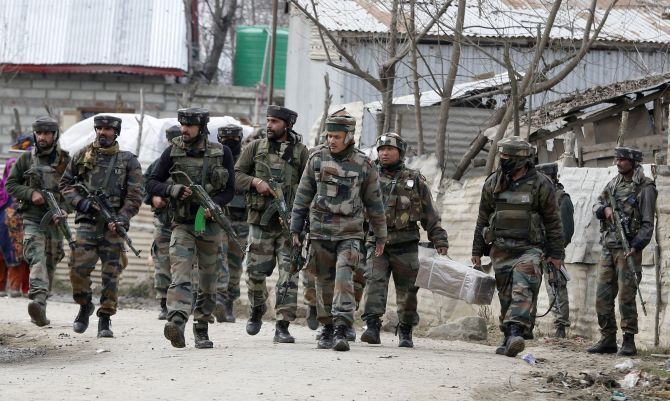
File Picture : Representational Image Purpose Only
Security here refers to “the security of the state and the core values and institutions of the state and the society” that constitutes the same. The threats to state and society may arise from within and without – internal and external which again maybe overlapping at times. Thus internal threats can have external dimensions such as the ” insurgency in the north east”, and the terrorist attacks in Kashmir and vice versa; and cross border drug traffic, piracy in the high Sea also fall in this category.
Internal security problem is often a product of geo politics, state failure in critical areas as for example serious imbalance in development of different regions such as tribal dominated minerals rich or border and remote regions” mass poverty, gross inequality and urban poverty creating ” alienated groups in the strategic areas of the country. One must however note that potential threats exist always in any state – even in a developed country as seen in France in the”yellow vest” movement recently. However it is the basic duty of the state to ensure that the administration- regulatory and development is so carried out as not to allow any of the problems and grievances to reach the proportion of an ” internal security problem”.
Herein lies the importance of a ” responsive” pro poor welfare state and the political will to carry out necessary reforms and take bold initiatives for ensuring that ” ordinary law” would be adequate to maintain peace and order not allowing the situation to develop into an ” an internal security problem”. One must therefore note that to deal with serious internal security problems there are special laws like the AFSPA 1958, Unlawful Activities Prevention Act, National security Act, Disturbed Areas Act and it is a shared responsibility of the Centre and the states in India because of the deployment of the central armed police forces ( CAPF) in troubled areas, the need for coordinated central- state efforts as the problems might spill over to other states or have already spread to neighbourhood as the Left Wing Extremism and cross border links.
From this perspective a continuing internal security problem has the potential to become an ” insurgency” as it challenges the sovereign monopoly right of the state to use force that leaves the state with no option but to invoke the provisions of the CrPC and the AFSPA. Insurgency is a state of mind as ideology is always a source of motivation and therefore requires deft handling, a patient long term strategy- a mix of strong arm methods and ideology to counter the influence of extremism to win ” the hearts and minds” of the people in insurgency affected areas.
The internal security problem essentially poses a threat to the polity and more so to a democratic state that we have, as in most cases it is not just the outcome of high incidence of crimes or offences; but “unmet grievances” arising from various reasons such as lack of land reforms resulting in continuation of exploitative land relations, deforestation and unchecked mining causing mass displacement of tribals and loss of their Livelihoods, massive urban poverty, unemployment and cruel living conditions.
We may note that though strictly from a legal point an IS problem can be seen as a situation where the incidence of crimes against the state and the individuals is at a point much above the “normal”, the socio political roots of the problem must also be analysed and ” pacification” measures such as land reforms and enforcement of the Forest Rights Act in LWE affected areas implemented to restore faith of the people in the IS problem affected areas in democratic governance. Since law and order is a “state subject ‘ in India it is primarily the duty of the district officers to deal with the internal security problem.


















